► Our Peugeot 508 Sport Engineered review
► A smooth and powerful family PHEV
► Eye-catching looks, company car numbers
Say hello to the 2024-spec Peugeot 508 Sport Engineered – the lion’s range-topping fastback and estate car duo that is doing a sterling job of adding a dash of panache into a sober-suited market sector.
It had a nip ‘n’ tuck facelift in summer 2023 to receive sharper front-end styling, updated infotainment and a slightly larger PHEV battery for longer range and we’ve now had a chance to drive both saloon and estate bodystyles, in the UK and abroad. Both are devilishly handsome to these eyes.
The 508 Sport Engineered’s appeal lies in its combination of dramatic looks, business-class motorway cruising, zero-tailpipe-emissions for up to 34 miles, and company-friendly tax. It comes in two versions: an oh-so attractive fastback (below) and estate, the latter of which is blessed with frameless side windows and a low-slung roofline for ample coupe attitude with wagon flexibility.
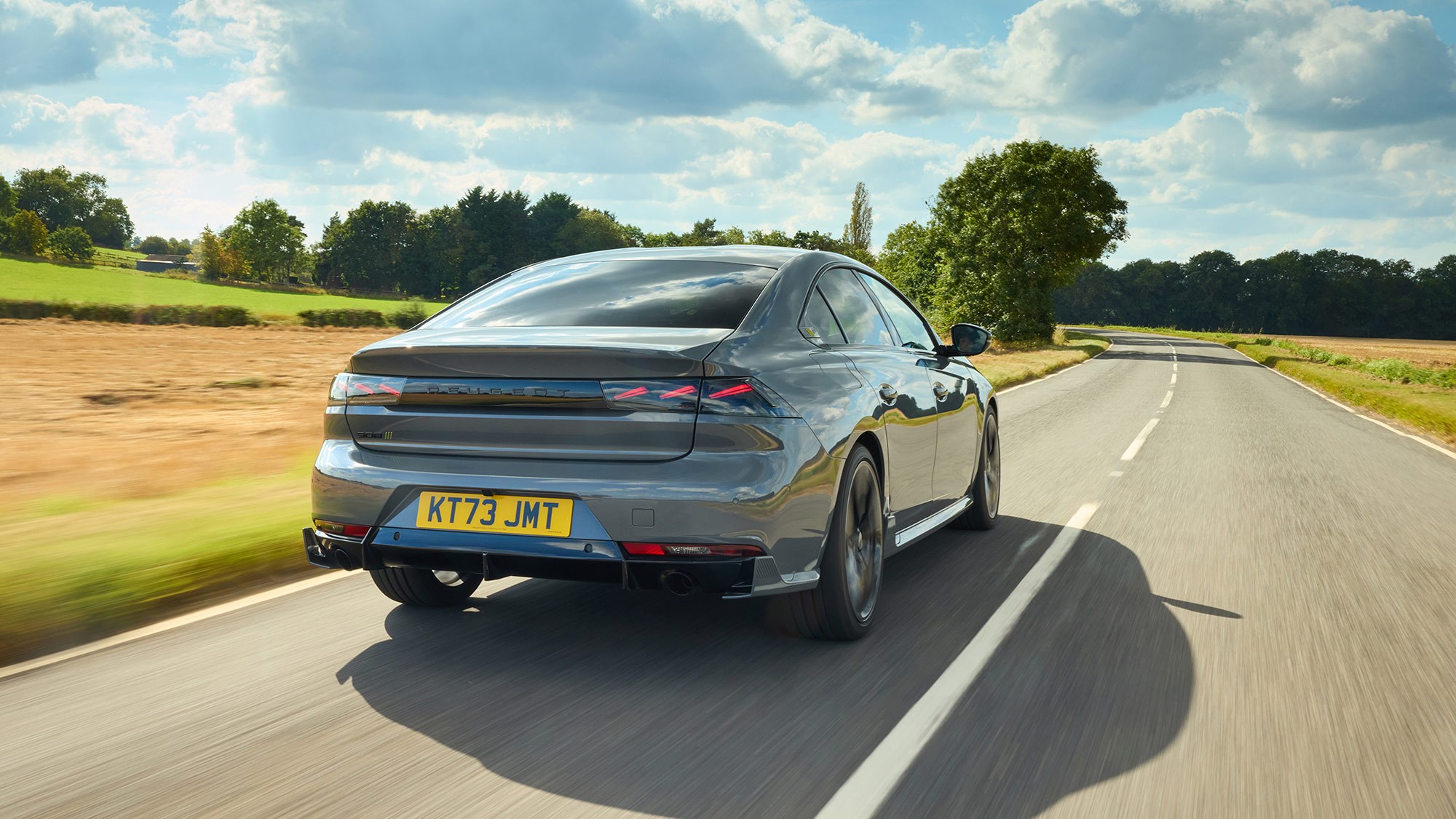
It’s still quite unusual for such a performance-focused offering to be underpinned by an on-trend plug-in hybrid drivetrain – a situation that’s changing all the time. But while Peugeot has a marketing advantage with the 508 PSE, it’s hardly been flying out of the showrooms. More’s the pity.
What exactly is a Peugeot 508 PSE?
In the old days, this might have been called a Peugeot 508 Mi-16, T16 or GTI, but today in an attempt to play up its motorsport connections, it’s called the Peugeot Sport Engineered. And, to be fair, this is not just marketing fluff: in its transition from stylish executive to autobahn stormer, the competition department has uprated its brakes, steering and suspension set-up to give it the poise to go with a dose of extra power.
In short, it’s a dual-motor plug-in hybrid, with a total power output of 355bhp for a claimed 0-62mph time of 5.3 seconds and a limited maximum speed of 155mph. So it does the numbers on paper, but is that enough to take aim at the BMW M440i or Audi S5 Sportback?
That’s a big ask for any French car – but it is also rather cheaper than its aforementioned Teutonic rivals. Especially when one considers just how much standard kit they throw in with the 508 PSE. You get all the driver-assistance technology you’d ever want, as well as a suitably premium-sounding Focal stereo, supportive massaging seats with AGR certification, five drive modes (4wd, Sport, Hybrid, Comfort and Electric) and a natty Night Vision assist system.
Compared with other 508s, the PSE additions are fairly subtle. There’s an aggressive diffuser and aero ducting on the front bumper, which is quite starting for a mainstream French car. Small vertical winglets protrude from the front and rear aprons (below) and are probably more useful for tucking the electricity cable into while the car’s on charge than actually channelling air, but they’re quite cool additions nonetheless.
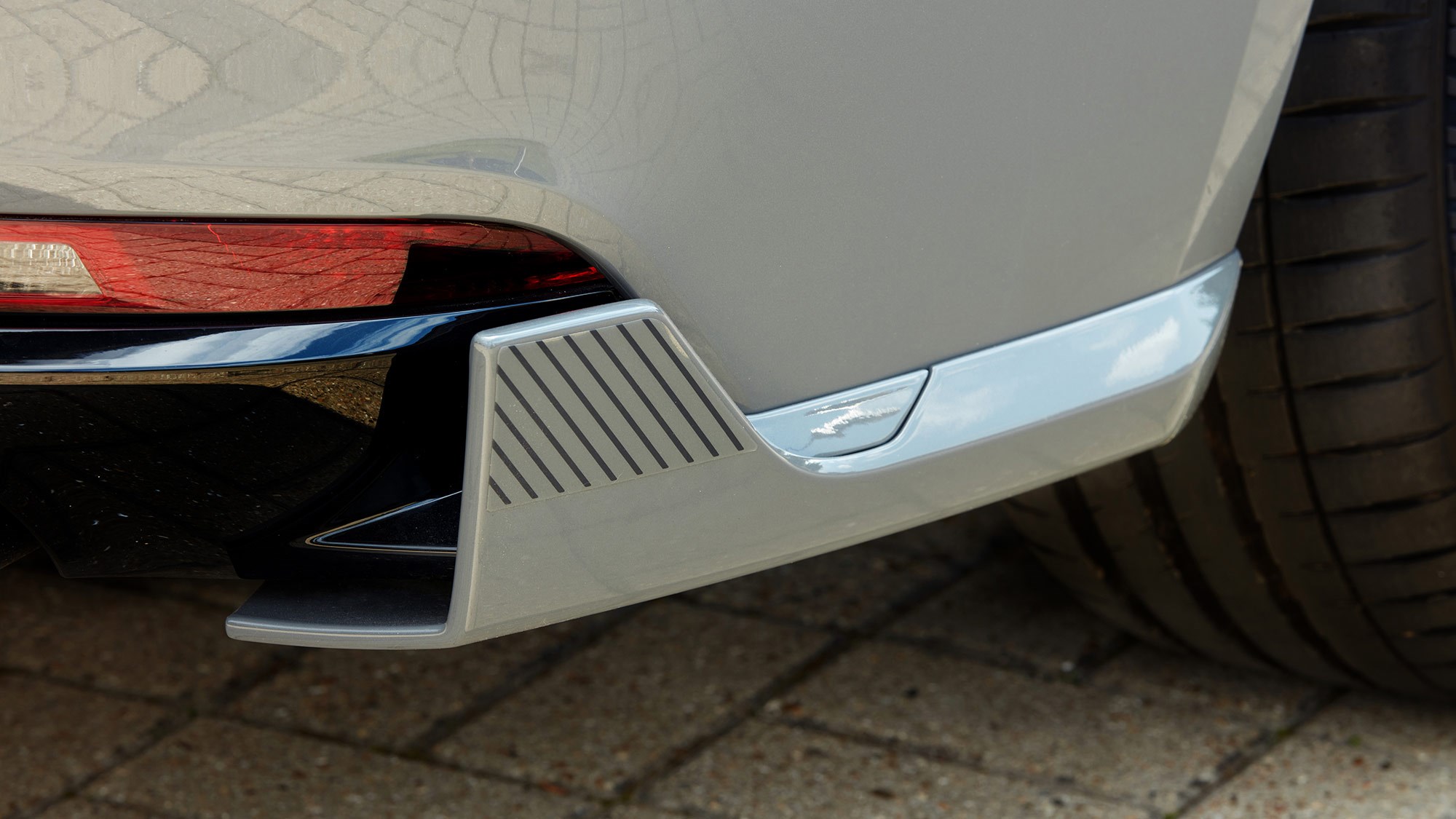
What’s the Peugeot 508 Sport Engineered like to drive?
It’s quick enough to be entertaining, but smooth enough to relax when you just want to get there. Its outright pace shouldn’t be a surprise, considering the 355bhp and 384lb ft of torque on offer via its 1.6-litre petrol engine and twin electric motors. Ample grip and traction are guaranteed by a four-wheel drive system that’s been tweaked to be playful enough to allow you to have some fun you’re in the mood.
It’s not as fast as a pure-petrol M440i or S5 with similar numbers, and that’s because it’s considerably heavier than its German rivals. But it’s not as heavy as you might imagine: the Peugeot’s 1850kg kerbweight is actually pretty good for a PHEV – even if a standard 508 is a featherweight in comparison.
The transmission defaults to shuffling up the ratios as early as possible to save fuel, but stoke it by putting the 508 PSE into Sport mode and it wakes up. Possibly with a little too much grumpiness, as it seems to hang onto each gear for too long when on full alert.
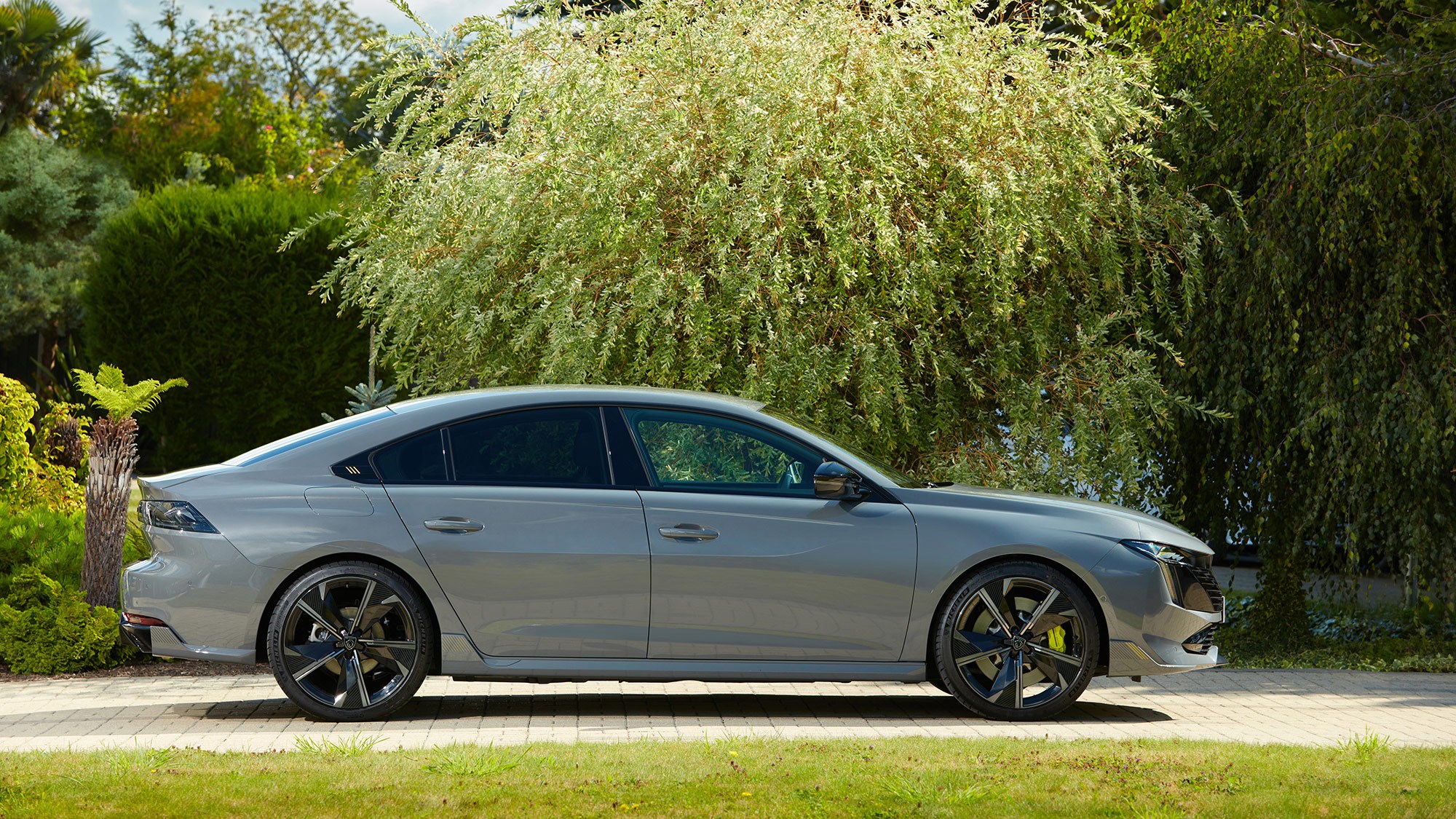
The best solution is to use the cheap-feeling column-mounted manual shift paddles to select cogs DIY-style, but these are too short and set too high – more suited to a 10-to-two driver than a quarter-to-three grip. Plus the left paddle is sandwiched between the left indicator stalk and cruise control switchgear, which is sub-optimal from an ergonomic standpoint. There’s just too much going on for your fingers to cope with.
Ride and handling
Things are better in the handling department. The Peugeot 508 Sport Engineered is quite neutral in a corner and can even be persuaded into a bit of lift-off oversteer if you’re aggressive on the pedals mid-corner, betraying its motorsport roots. The PSE is lower and wider than the standard 508 range, and the bespoke springs, dampers and anti-roll bars really do their job here, with the its overall alertness complemented by the tiny shirt-button steering wheel as part of Peugeot’s i-Cockpit layout.
Damping is adaptive and offers three drive modes to play with, from comfortable to firm. However, there’s always a firm edge to the ride that reminds you you’re in the sportiest version, shod with chunky 245/35 ZR20 Michelin Pilot Sport 4S tyres.
Otherwise it’s typical Peugeot Sport – more hot hatch than an estate/fastback, with light controls, a little bodyroll, and agility and compliance to the ride. It’s the latter quality that really adds to the fun, as well as its ability to cover distances on imperfect roads very quickly indeed.
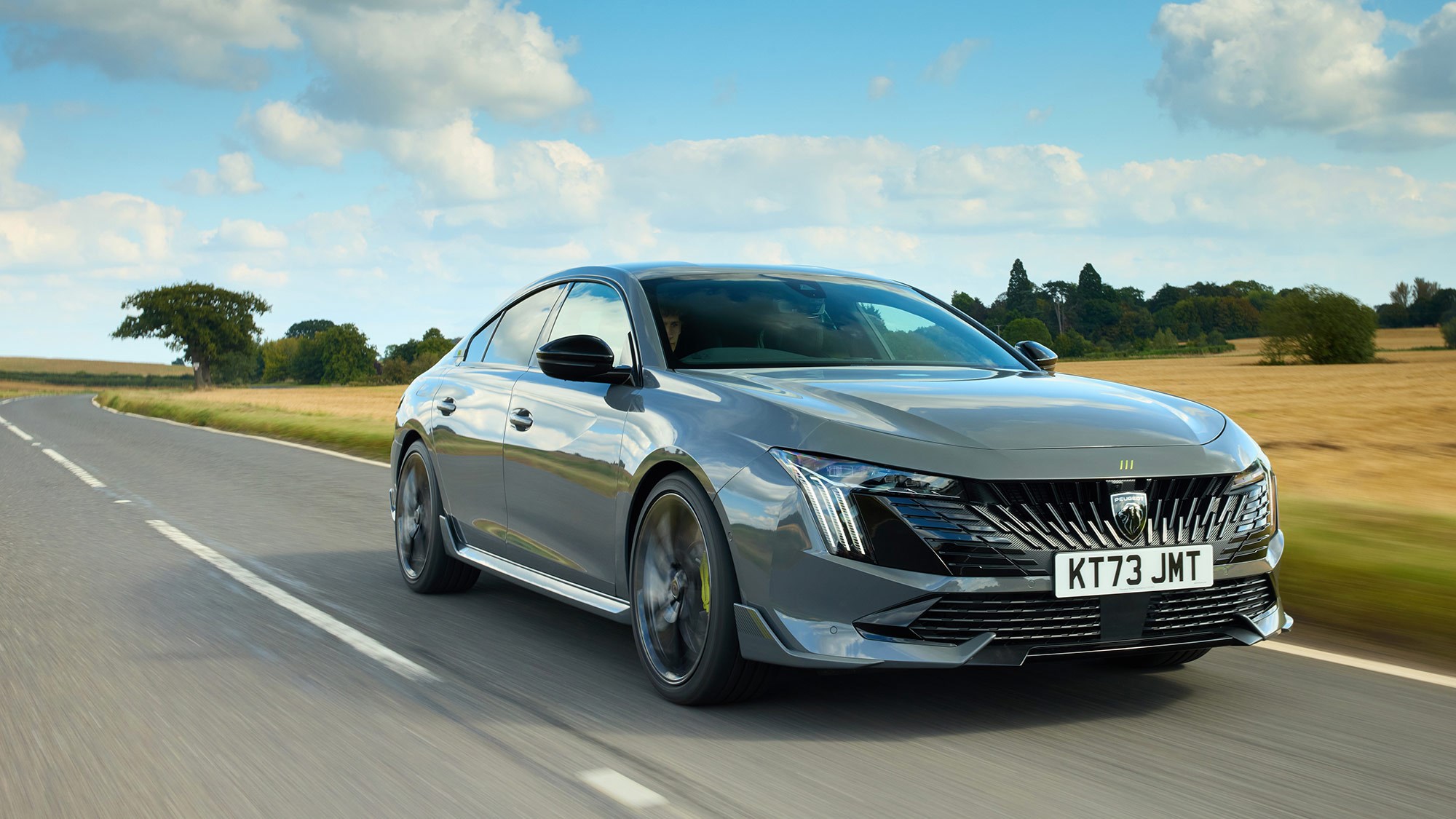
It’s not perfect. Far from it, in fact. The 380mm diameter front discs and four-piston callipers are powerful, but feel spongy and hard to get dialled into. The Peugeot 508 Sport Engineered has ample stopping power thanks to its Alcon calipers and bi-material discs, but its lack of feel hampers confidence if you’re really pressing on. The reedy and over-synthesised engine note is off-putting, too, especially compared with its six-cylinder rivals.
Range and charging
The Peugeot 508 Sport Engineered’s 12.4kWh battery takes 1hr 45min to fill at the standard 7.4kW rate on a dedicated home or public charger. You need a full battery to get all 355bhp, although with no charge the 508 will run as a sort-of hybrid in town, and on the whole the transition between petrol and electric operation is pretty smooth and unobtrusive.
Peugeot claims ‘up to 34 miles’ of silent electric running around town and we’d interpret that as 20-25+ miles in normal conditions. On a chilly winter night at -1C, we observed a claimed range of just 17 miles. The onboard range meter is pretty accurate, however, and the 508 conserves its energy.
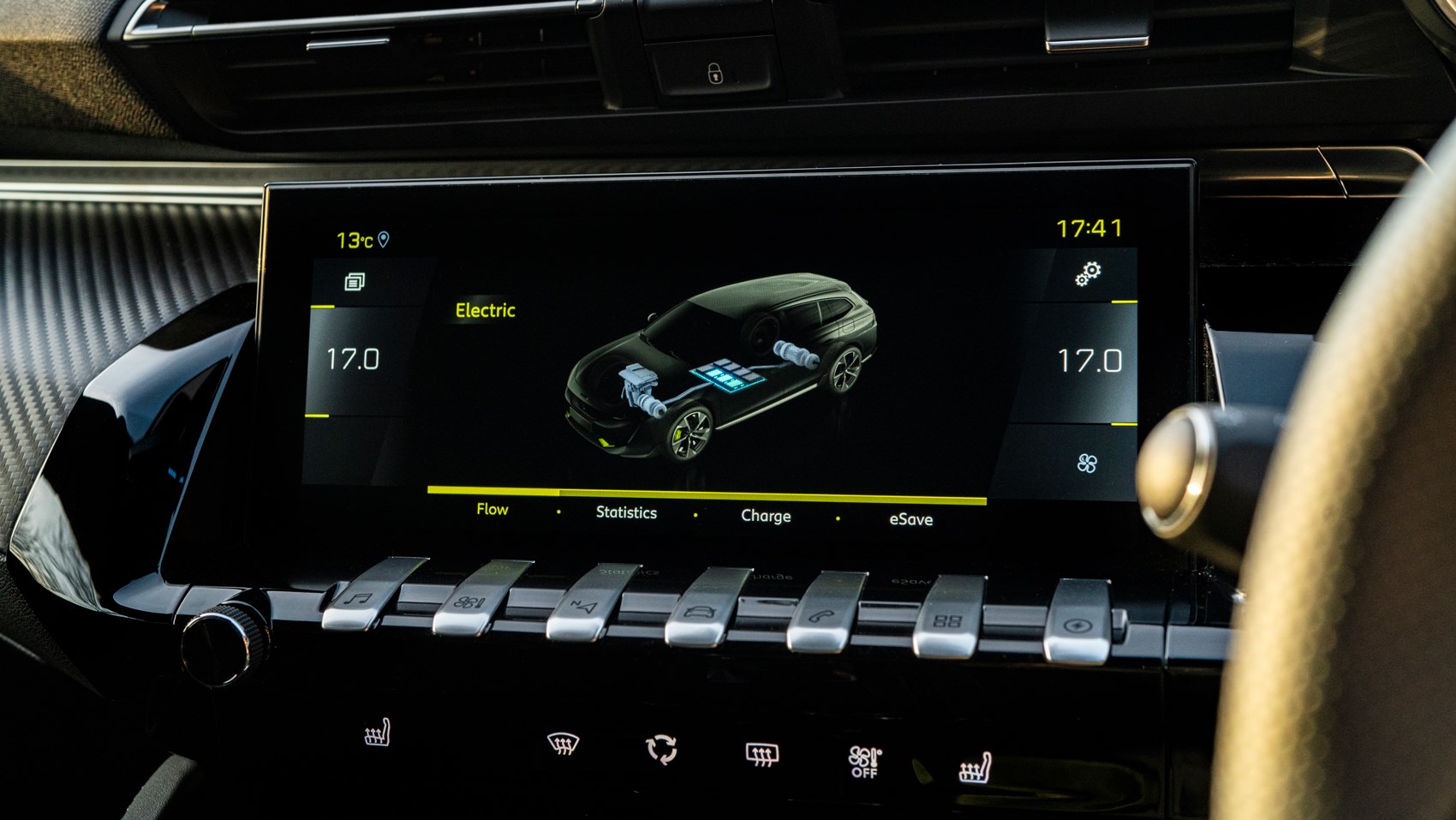
CO2 emissions are a claimed 40g/km, while fuel consumption is a nominal 155mpg on the test cycle (assuming you never let the battery run down) – all of which is fantasy for anyone driving in the real world. We averaged 43.4mpg in our week with the car on UK road test.
Conversely, low official emissions are great news for your tax return if you’re a business user, guaranteeing cheaper company car benefit-in-kind bills.
What’s it like inside?
Inside, you still get Peugeot’s divisive i-Cockpit layout with its shrunken steering wheel set below the dials, only in the PSE there’s more carbonfibre-effect material scattered across the dashboard. Overall it’s a nice interior, very futuristic-looking, but the hard plastic used for the door bins and under the armrest stick out on a £50,000 car.
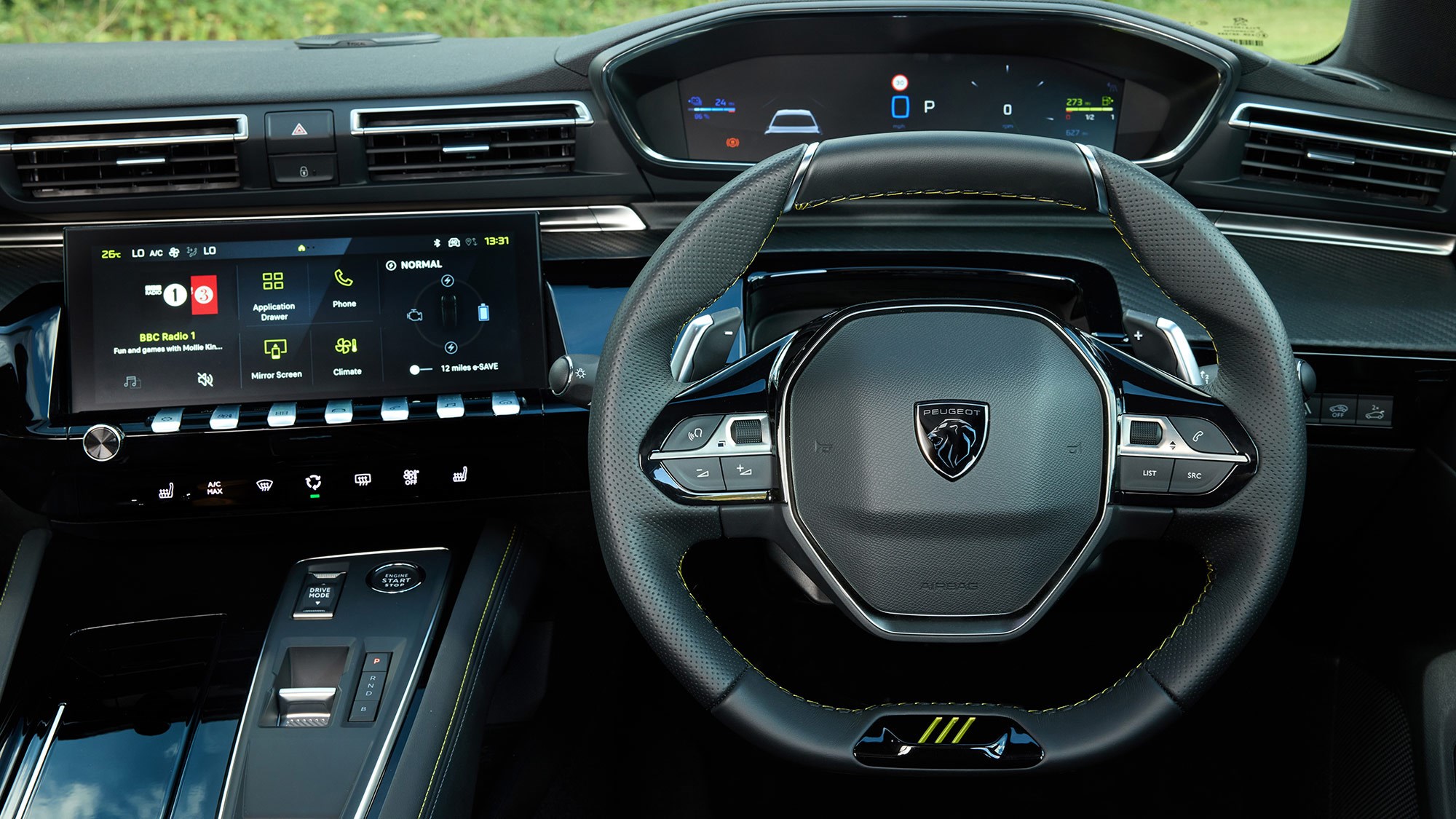
The recent facelift brings an EV-style transmission selector, an updated infotainment set-up that feels a lot less old-hat than the previous model, and some more sober interior colours and trims.
The driving position won’t work for everyone, but at least the small steering wheel feels more in keeping here than it does in a Peugeot 5008 SUV. Front seats are excellent (and come with massaging), although headroom is tight. Rear room is also far from generous, although the Peugeot 508 Sport Engineered estate does at least have reasonable headroom.
Don’t bother with the fastback if you have a grown-up family. We found poor legroom and taller passengers will find their heads brushing the roof, even with no sunroof fitted. It’s disappointing in a car this size, although we appreciated the flat boot floor and 60:40 split rear seats.
Both bodystyles have panache and stand-out-from-the-crowd style galore, though our money would go on the Peugeot 508 Sport Engineered Estate (below).
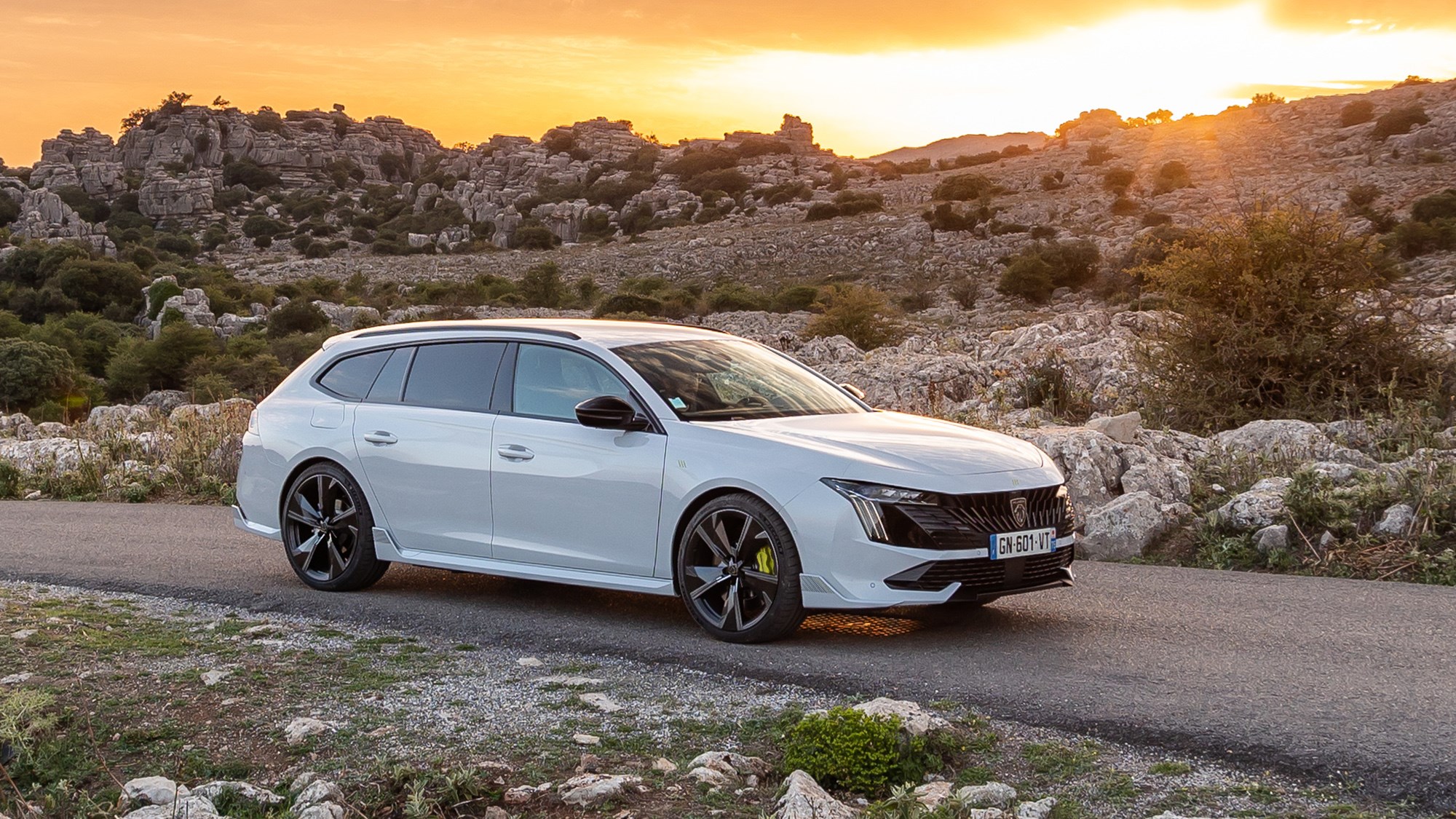
Testing the car at nighttime confirmed excellent headlights, whose active dip function shuttered the beam effectively, meaning oncoming drivers are not blinded. And there’s no denying the cool front graphics, whose three-strake day-running lights are most distinctive.
Peugeot 508 Sport Engineered: verdict
The 508 PSE is hampered by an eye-catching price starting at £53,975 and (in the UK at least) a lack of brand kudos. Consequently, it’s not exactly sold well to date. That’s a shame because it’s a good-looking car that handles well, goes hard and is usefully tax efficient.
The facelift brings a fuller equipment package and a renewed reason to consider one – and for that, it should be applauded. Will it result in flowing order books for Peugeot? Probably not – but as a halo product, that’s probably not too much of a problem for its maker.
What makes this car stand out against rival PHEVs is the fact it gives away very little in terms of outright practicality. The boot capacity is the same as a non-plug-in Pug, and despite being way more fun and accomplished to drive than the standard 508, it’s barely any less comfortable day-to-day. It’s just a shame that rear accommodation is surprisingly poor for back-seat passengers.
So if you’re looking for a genuinely exciting fast plug-in hybrid that can also entertain, and sets you apart as an individualist, the 508 PSE is an interesting choice. It’s an odd niche, but one that deserves plugging.
Read more Peugeot reviews here